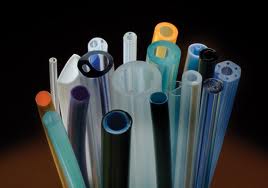A thermoplastic is a type of plastic made from polymer resins that becomes a homogenized liquid when heated and hard when cooled. When frozen, however, a thermoplastic becomes glass-like and subject to fracture. These characteristics, which lend the material its name, are reversible. That is, it can be reheated, reshaped, and frozen repeatedly. This quality also makes thermoplastics recyclable.
There are dozens of kinds of thermoplastics, with each type varying in crystalline organization and density. Some types that are commonly produced today are polypropylene, polyethylene, polyvinylchloride, polystyrene, polyethylenetheraphthalate and polycarbonate.


